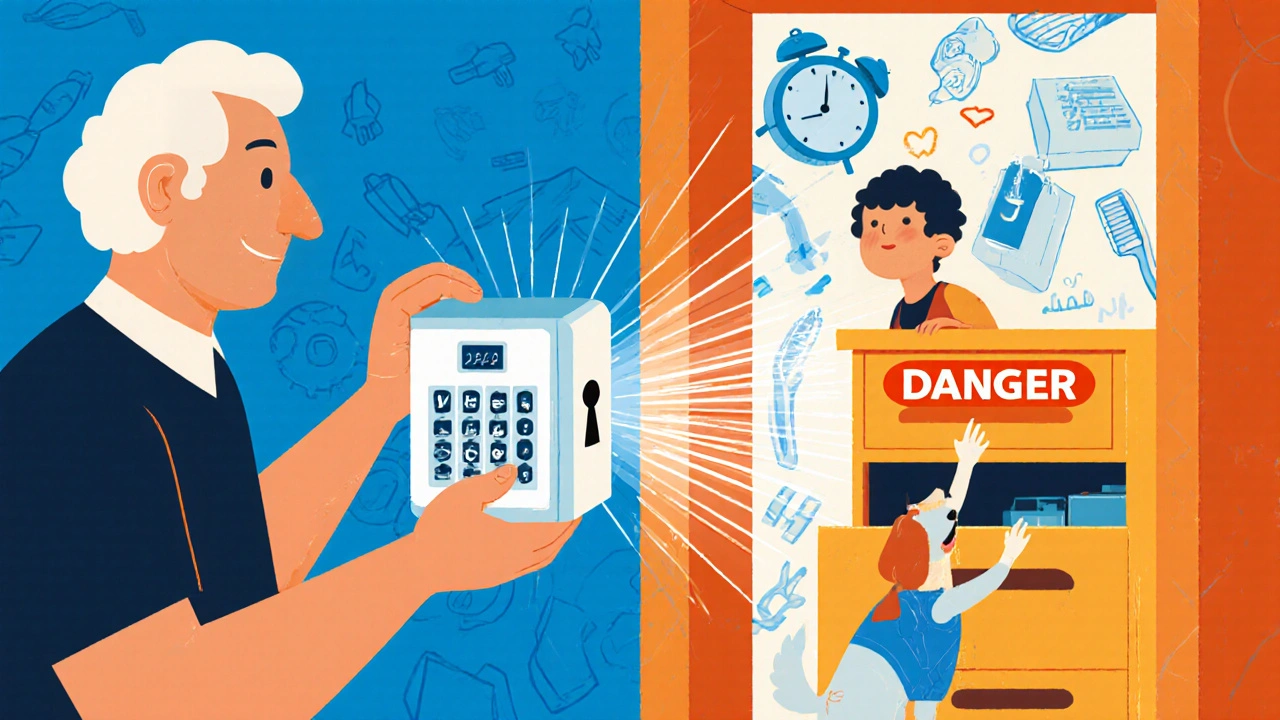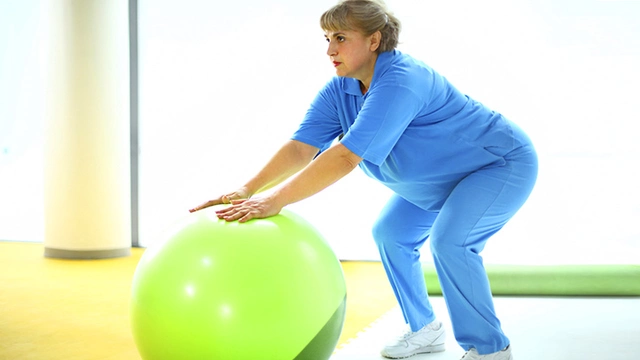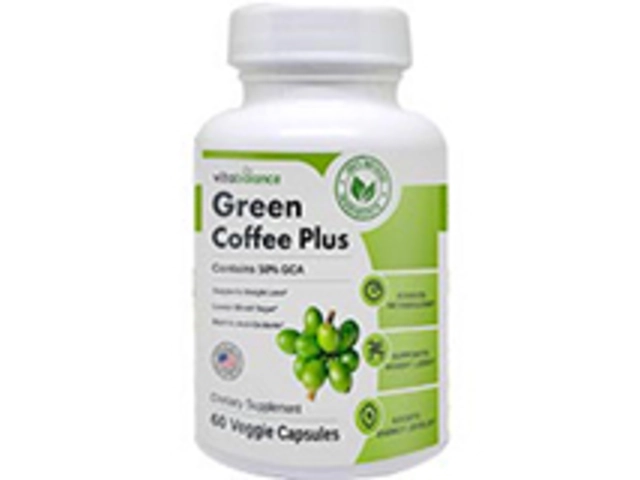Medication Storage Safety Checker
Check Your Storage Location
Select where you store medications to see if it meets safety guidelines
"Child-resistant caps stop only 50-80% of kids from opening them."
- Consumer Product Safety Commission
"65% of dogs opened pill bottles in under 2 minutes."
- VCA Animal Hospitals
"Locked storage reduces accidental poisonings by 92%."
- Nationwide Children's Hospital
Results
Select a storage location and click "Check Safety" to see your results.
Every year, tens of thousands of children and pets end up in emergency rooms because they got into medications that weren’t stored properly. It’s not because parents are careless - it’s because most people don’t realize how easy it is for a curious toddler or a smart dog to get to pills, liquids, or creams left out in plain sight. A child as young as 18 months can climb onto a countertop. A dog can chew through a pill bottle in under two minutes. And if you’re storing your pet’s heartworm medicine next to your child’s cough syrup? That’s a recipe for disaster.
Why Locked Storage Isn’t Optional
Child-resistant packaging sounds like it should be enough. But here’s the truth: it’s not. The Consumer Product Safety Commission found that even the best child-resistant caps stop only 50 to 80% of kids from opening them. That means one in five children can still get into the bottle. And pets? They don’t care about caps at all. VCA Animal Hospitals tested dogs with standard pill bottles - 65% opened them within two minutes. No tools. No help. Just pure determination and a strong jaw.The only thing that actually works is a locked container. Research from Nationwide Children’s Hospital shows that using a locked cabinet or box reduces accidental poisonings by 92%. That’s not a suggestion. That’s the standard. And it doesn’t have to cost much. A basic wall-mounted lockbox, tested by Consumer Reports, costs under $25. Many families already have unused gun safes, toolboxes, or even old filing cabinets they can repurpose. If you’re worried about cost, think about this: one emergency room visit for a child who swallowed ivermectin paste can cost over $20,000. A $30 lockbox? That’s an insurance policy.
Where Not to Store Medications
You’d be surprised how many people still keep meds in the worst possible spots. The bathroom cabinet? That’s humid, hot, and easy for kids to reach. Nightstands? Perfect for late-night access - and for toddlers who crawl in bed with you. Purses? A 2023 CDC survey found that 68% of parents admit to leaving medications on nightstands or in purses. And pets? They’ll dig through a purse like it’s treasure.Even the kitchen isn’t always safe. Storing pet medications near food bowls is a common mistake. A 2022 study by VCA Hospitals showed 45% of households do this. That’s dangerous because many pet meds are flavored - banana, chicken, strawberry - to make them easier for animals to swallow. To a child, that smells like candy. In fact, FDA data shows flavored pet meds are 300% more likely to be mistaken for food by young kids than plain human pills.
And don’t forget about topical creams. One drop of 5-fluorouracil cream - used for skin conditions - can kill a cat. That’s not a typo. One drop. That’s why you can’t just put all your meds in one drawer. You need separate zones.
Human vs. Pet Medications: Keep Them Apart
This is one of the most overlooked risks. People assume if it’s in a bottle, it’s fine to store together. But human and pet medications are not the same. They’re not even close.Heartworm preventatives for dogs often contain ivermectin. That’s safe for dogs - but deadly for children. A 5mL dose of veterinary ivermectin liquid contains ten times the toxic amount for a toddler. In 2021, a child in Ohio ingested a tube of dewormer paste meant for horses. He spent 14 days in intensive care. The family stored it in the same kitchen drawer as baking soda.
The CDC found that storing human and pet meds in separate locations reduces mix-up errors by 89%. The American Academy of Pediatrics updated their guidelines in February 2024 to say: keep them at least 15 feet apart. That’s not arbitrary. It’s based on research showing that distance cuts down on accidental access by 94%. Put your child’s asthma inhaler in a locked box in the bedroom. Put your dog’s flea treatment in a locked cabinet in the laundry room. Don’t make them neighbors.

Storage Rules That Actually Work
Here’s what safe storage looks like in real life:- Lock it. Use a lockbox, a cabinet with a childproof latch, or a small safe. If you have a gun safe, use it.
- Keep it high. At least 4 feet off the ground. Some experts recommend 5 feet - especially if you have a climber.
- Keep it dry. Humidity ruins meds. The FDA says 40% of common drugs degrade within 30 days if exposed to moisture. That’s why bathrooms and kitchens are bad. A closet in the hallway or a high shelf in the bedroom is better.
- Keep it cool. Most human meds need to stay between 68-77°F. Some, like insulin, need refrigeration. Pet meds are more forgiving - but don’t assume that means you can store them together.
- Keep the original label. 35% of medication errors happen because someone transferred pills to a different container. A pill in a spice jar looks like cinnamon. Don’t do it.
- Separate human and pet meds. Two different locked containers. Two different rooms if possible.
And don’t forget about expired meds. The DEA’s National Take Back Day collects unused prescriptions - and in 2024, over 11,000 drop-off sites were available. Don’t flush pills. Don’t throw them in the trash. Take them to a pharmacy or a police station. It’s free, safe, and prevents kids from finding them later.
What About Elderly or Disabled Users?
If you or someone in your home has trouble opening child-resistant caps, you’re not alone. NIH data shows 40% of older adults struggle with them. But locking meds away shouldn’t mean they can’t be accessed when needed.There’s a solution: lockboxes with emergency release features. Some models have a code or key that unlocks them quickly for caregivers. Others have a simple lever that only adults can operate. These are designed for exactly this situation. Talk to your pharmacist - many offer free or low-cost lockbox programs for seniors.
Also, consider using a pill organizer with timed alarms - but only if you keep it locked. Don’t leave it on the counter. That defeats the whole purpose.

Real Stories, Real Risks
On Reddit’s r/Parenting, over 1,200 parents shared their experiences. Nearly 80% admitted they didn’t lock their meds. Over a third said their child had already gotten into something. One mother found her 2-year-old with a bottle of her blood pressure pills. Another father discovered his dog had chewed through a bottle of gabapentin meant for his anxiety.One family in Texas stored their cat’s thyroid medication in the same drawer as their child’s allergy pills. The child took a pill thinking it was candy. She had a seizure. She survived - but only because her dad got her to the ER in 12 minutes.
On the flip side, a couple in Seattle started using a small gun safe for all their meds after their toddler climbed onto the counter and grabbed a bottle of cough syrup. They bought it for $89. They haven’t had a single incident since. They say it’s the best $90 they ever spent.
What’s Changing in 2025?
New rules are coming. As of 2023, the FDA requires all veterinary medications to have clear pictograms on the label showing storage instructions - like a padlock or a crossed-out child. By 2025, most manufacturers will have fully adopted this. It’s a small change - but it helps.Smart pill dispensers are also growing. These devices lock meds inside and only release them at set times. They’re great for seniors who need reminders - and for families who want extra security. But they’re not foolproof. If you leave the device unlocked on the counter, it’s still dangerous.
The real solution isn’t technology. It’s habit. The CDC says it takes 21 to 30 days of consistent practice to make safe storage automatic. That means checking your lockbox every day. Putting meds back immediately after use. Teaching older kids not to touch them - even if they’re “just looking.”
And if you’re wondering whether it’s worth the effort? Consider this: in 2023, over 60,000 children under five visited the ER because of accidental medication ingestion. Almost all of those cases were preventable. You don’t need to be perfect. You just need to be consistent.
Start Today - One Step at a Time
You don’t need to overhaul your whole house tonight. Start with one thing:- Find your most dangerous meds - opioids, heart meds, insulin, pet ivermectin, topical creams.
- Put them in a lockbox - even if it’s just a small one you bought online.
- Move it away from the bathroom and kitchen.
- Separate pet meds from human meds.
- Check it every morning when you brush your teeth.
That’s it. No fancy gadgets. No expensive upgrades. Just a locked box and a habit. That’s what keeps kids and pets safe.
What’s the best place to store medications at home?
The best place is a locked box or cabinet, at least 4 feet off the ground, in a cool, dry area like a bedroom closet or hallway shelf. Avoid bathrooms and kitchens - humidity and heat ruin meds, and they’re too easy for kids and pets to reach.
Can child-resistant caps really keep kids safe?
No, not on their own. Child-resistant caps stop 50-80% of children, but the rest can still open them. Even toddlers as young as 18 months can climb onto counters. Locked storage is the only reliable protection.
Should I store my pet’s meds with my own?
No. Human and pet medications should be stored separately - ideally in different rooms. Many pet meds are flavored and look like candy to kids. Some, like ivermectin, are deadly if taken by children. The CDC says separate storage cuts mix-up errors by 89%.
What should I do with expired or unused medications?
Never flush or throw them in the trash. Take them to a pharmacy or a DEA National Take Back Day drop-off site. Over 11,000 locations are available across the U.S. This prevents kids and pets from finding them, and it protects the environment.
I have trouble opening child-resistant bottles. What can I do?
Ask your pharmacist for a lockbox with an emergency release - like a code or key - that only you or a caregiver can use. Many pharmacies offer these for free or at low cost. Never leave meds unsecured just because the cap is hard to open.





15 Comments
Ryan Masuga- 9 November 2025
Just locked my kid's asthma inhaler and my dog's heartworm pills in a cheap lockbox above the fridge. Best $25 I've ever spent. No more nightmares about toddlers and chewed-up bottles.
William Priest-10 November 2025
Ugh. Of course you need a lockbox. But honestly? If you’re still storing meds in the bathroom, you’re not just careless-you’re a walking public health hazard. Did you know humidity degrades 40% of meds in 30 days? The FDA says so. And you’re telling me you didn’t know that? 😒
Jennifer Bedrosian-11 November 2025
My 2yo got into my blood pressure pills last year and I still have nightmares. I thought they were safe in the nightstand. NOPE. Now everything’s in a locked box in the closet. I cry every time I open it. But it’s worth it. You guys need to do this. Please. For your babies.
Lashonda Rene-12 November 2025
I used to keep my cat’s thyroid meds next to my kid’s allergy pills because I was lazy and thought it was fine. Then I read that flavored pet meds are 300% more likely to be mistaken for candy and I nearly passed out. Now they’re in separate rooms. One in the laundry room, one in the bedroom. I check them every morning like a ritual. It’s not that hard. It’s just about being mindful. And honestly? It’s kind of peaceful now. Like I’m doing something right for once.
Andy Slack-13 November 2025
Just got my first lockbox today. Took 10 minutes. No tools. Just screw it to the wall. I’m already feeling like a better parent. You don’t need to be perfect. You just need to start. One step. One box. One day. You got this.
Rashmi Mohapatra-14 November 2025
People in America are so dramatic. In India we just keep meds in the kitchen cupboard. Kids learn fast not to touch things. If they get sick they get better. No lockboxes needed. You overthink everything.
Abigail Chrisma-15 November 2025
My mom’s from rural Georgia and she used to store all meds in the same drawer. I didn’t realize how dangerous it was until I moved out. Now I teach my neighbors how to lock things up. It’s not about fear. It’s about care. And it’s something we can all do, no matter where we’re from.
Ankit Yadav-15 November 2025
My cousin’s dog died from eating a human antidepressant. They were stored together. I didn’t know it was that easy to kill a pet with a human pill. Now I keep mine in different cabinets. I don’t care how inconvenient it is. I’d rather be extra than lose someone.
Meghan Rose-16 November 2025
Okay but what if you’re disabled and can’t reach a high shelf? Or you have arthritis and can’t open a lockbox? You’re just supposed to suffer? The system doesn’t account for real people. It just says ‘lock it’ like that’s enough.
Steve Phillips-17 November 2025
Let me get this straight-you’re recommending a $25 lockbox as a ‘solution’? What about the fact that 80% of accidental ingestions happen in homes where meds were supposedly ‘locked up’? This is performative safety. You’re not preventing harm-you’re just checking a box so you can feel morally superior. And don’t even get me started on the ‘FDA says’ nonsense. The FDA is a corporate puppet.
Rachel Puno-19 November 2025
My grandma uses a lockbox with a code. She can open it easy. Her meds are safe. Her grandkids can’t get to them. It’s not complicated. Just make one small change. Do it for the people you love.
Clyde Verdin Jr-20 November 2025
Oh wow. Another ‘safe storage’ lecture. Next you’ll tell us to lock our knives too. What’s next? Lock the stairs? The fridge? The air? This is fearmongering dressed up as parenting. My kids are fine. My dog’s fine. Stop making everyone feel guilty for not living in a bunker.
Key Davis-22 November 2025
While the sentiment is commendable, the implementation of such measures must be balanced with accessibility, dignity, and autonomy-particularly for elderly and disabled individuals. The recommendation to utilize lockboxes with emergency release mechanisms is not only prudent but ethically imperative. One must ensure that safety does not become a barrier to essential care.
Cris Ceceris-22 November 2025
I keep thinking about that line: ‘The real solution isn’t technology. It’s habit.’ It’s weird how something so simple-just putting things back in the same place every time-can save a life. I used to be the guy who left pills on the counter because I was ‘just going to take them in a sec.’ Now? I’ve got a little box. I open it every morning. It’s become part of my routine. Like brushing my teeth. I didn’t realize how much I needed that kind of structure until I started doing it.
Brad Seymour-23 November 2025
Just moved to the US from the UK and I was shocked how much people here stress over meds. In the UK we just keep them in the cupboard. But after reading this, I get it. My niece almost ate my dog’s flea pill last week. I bought a lockbox today. Small change. Big difference.